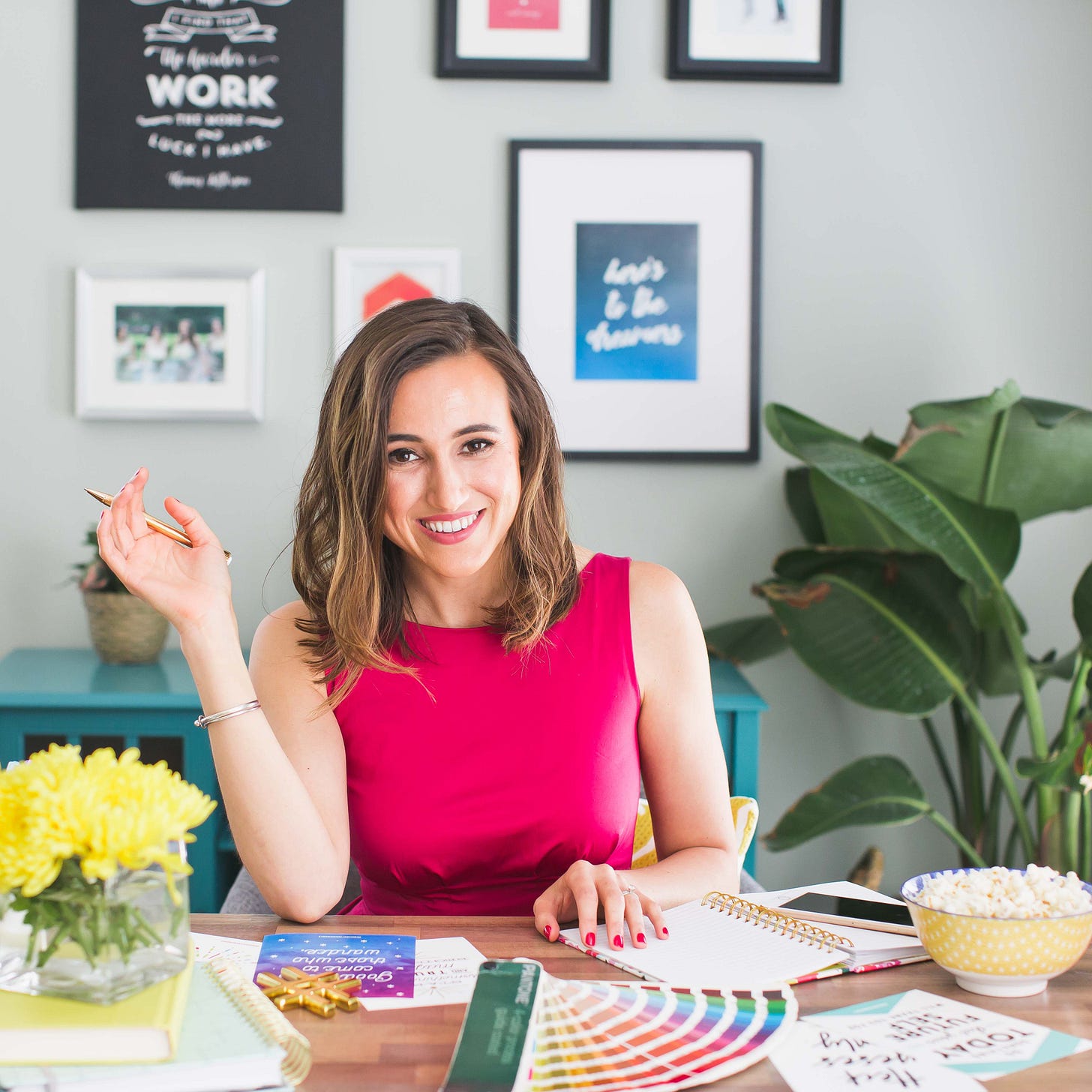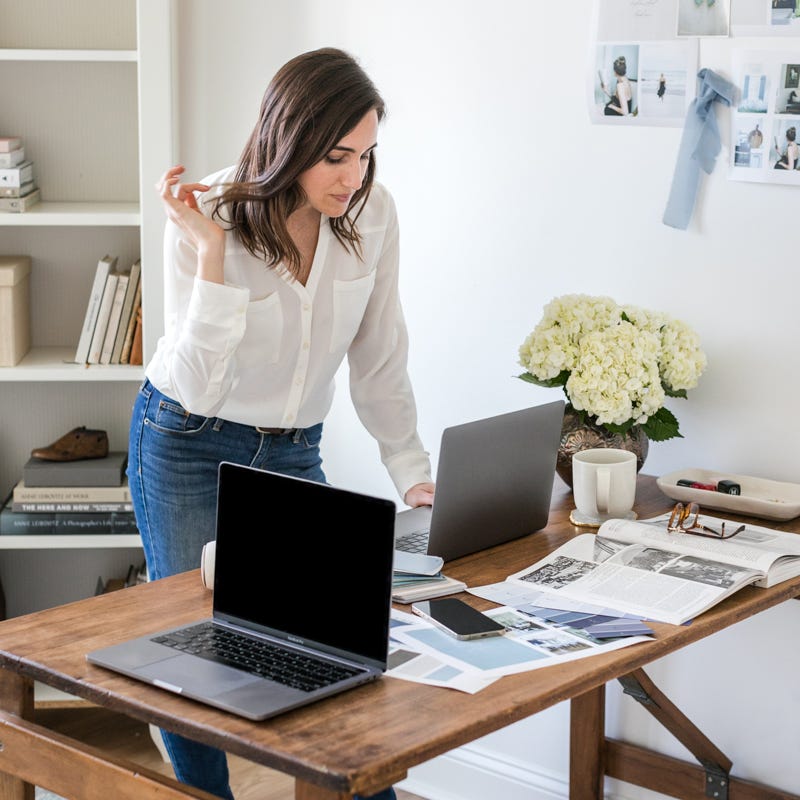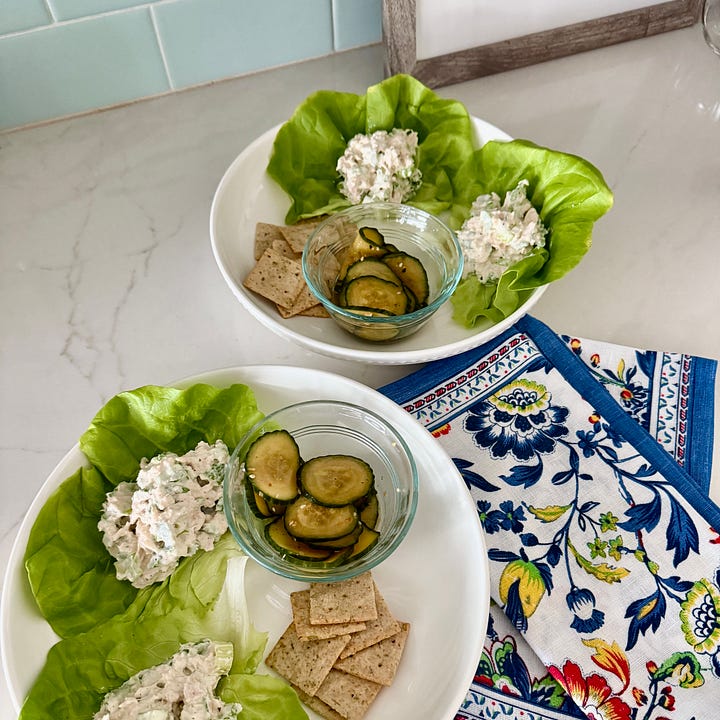Last month, Substack introduced something new, called Rising Newsletters, and I was delighted that Inspiration Everywhere made the list! It was ranked in the top 100 of Design Newsletters, and I nodded along with the classification.
Yes, design! My background is in graphic design! That makes sense!

But when I stopped to think about the recent content I’ve shared on topics like books, writing, setting intentions, mixed with random anecdotes about granola and cast recordings of Broadway shows nobody’s heard of, I panicked!
😅 I asked you to confer: are you coming here to read about design and leaving disappointed?

Gratefully, it seems most of you are happy with all the creative ramblings, from book querying to soliloquies about my lavender neck pillow. Regardless, I would enjoy sprinkling more design-specific posts throughout the year, and today’s topic is one that’s often on my mind.
Everything is design!
I can’t remember who first introduced me to this concept, but I do have a fun ah-ha moment that cemented it. I was new to fiction writing, editing a sentence that was both incoherent and uninteresting.
I kept looking at it, squinting, considering which words to eliminate, which to add, which to rearrange — only to lift my head and proclaim (to my empty office): “Oh! Wait! Writing is designing words!”

This principle extends beyond tasks and activities you may consider creative.
Design is for everyone and applies to everything: the outfit you’re wearing today, how you serve dinner, even the way you write an email. It’s ALL design.
In the remainder of this post, I’ll share the five most important design principles that you can apply to almost everything in your life. By keeping them in mind, you’ll be metaphorically coloring your world.
With your intentionality, everything will start to look prettier! And you’ll feel great too! How lovely to make choices that help you and the people in your life appreciate what’s around you.
Design Principles for everyone and everything
💆♀️ Less is more
To say that we are all in a nearly constant state of overstimulation is an understatement. With so much flying at us, it’s taxing to process, and it’s the reason so many of us have a hard time articulating what’s most important to us.
One of the ways we can help turn the noise down on all of that chatter is to be a curator. By eliminating excess, we can help make things clearer, easier, and more enjoyable to experience.
Ways you might practice this in your life:
Emptying your closet of clothes that no longer make you feel your best
Trimming down a multi-paragraph text message into one succinct sentence (I need to work on this 😂)
Presenting a minimal list of options to help ease decision fatigue. If you’re making plans with a friend, instead of saying, “Do you want to get together next week?” try, “Let’s meet up next week. I’m free Wednesday or Friday. I was thinking this café or that coffee shop.”
The added benefit of practicing this principle is that white space, margins, and room to breathe are received as intentional, confident, and assured. It’s an instant way to elevate everything you do!
✂️ Editing is designing
While I do believe that natural talent and individual strengths are factors in output, all the best art is created with thought, care, and a lot of revision.
Whether you’re rearranging the contents of your kitchen cabinets, trying watercolor painting for the first time, or putting together a bouquet of flowers, have patience! Don’t expect to get things right on the first try. Even the most experienced, talented people are constantly practicing, refining, and revising.
One of the things I’ve found is that as soon as I take that pressure off myself, it allows blocked creativity to flow. The experience of rearranging is like playing! It’s so much more enjoyable and almost always leads to better results.
👯♀️ Know your audience
If you’re A Podcast for Creatives listener, you’ll remember how often we discussed this concept. It kept coming up because it’s imperative for anyone creating anything for the online world, but I’ll argue that it’s important for everyone.
As much as you can, cater to the people you’re creating for (just like I’m doing with this post). Lead with those folks in mind. Put yourself in their shoes. Care about them — their struggles and desires. Get out of your head and think about how they’re feeling.
One of the most underrated and transformational things we can do for another person is to simply make them feel heard and understood.
If you create content, pay attention to comments and DMs. What’s on everyone’s mind right now, and how can you help?
If you’re a caretaker in any sense: a parent, a teacher, someone caring for an elder family member, how can you cater your conversations and activities to make them feel more celebrated and loved?
If you’re hosting your neighbors for dinner, how can you make the meal extra special for them? Consider their preferences, interests, allergies, and personalities.
❤️ Honor yourself
Some of the best designs are contradictory (more on that in Design Principle 5), but for now, let me present advice that goes against Principle 3 (Know your audience).
Lean into your unique inclinations. Share the random, weird things you love. One of the most interesting things I read on Substack recently was this post from
, who followed the urge to make block prints based on a phrase that had stuck with him. He had a creative urge, and he indulged! And you should too!Invite a friend to that concert of the band that only you’ve heard of.
Sign up for a tap dancing class because you’ve watched one too many Fred Astaire movies. (🙋🏻♀️)
Repaint your bathroom in royal purple because you are a queen.
The true driving force behind this newsletter is inspiration. I can’t get enough of looking at beautiful things, imagery, reading stories, and hearing songs that spark something in me. But the real key to inspiration is to take all of that input and apply your personal, sometimes weird, spin on it. That’s where the magic happens! That’s how you create incredible art.
🚫 Break the Rules
I hope that you’ve found these design principles to be enlightening, but also, I hope you’ll forget them!
In learning anything new, it’s important to understand the principles and why they exist so you can make intentional decisions to best communicate your vision. Maybe when it comes to performing surgery or flying an airplane, stick to the playbook.
But with most everything else (especially art!) don’t be afraid to color outside the lines. Though your output might be outrageous and outwardly nonsensical, it’ll be much more likely to be impactful, especially if you have a good reason behind your choices.
When people pause and look, you are given the opportunity to say something, to spark a new idea, or a shift. You can quite literally change the world with the things you create!
✍️ Creative Exercises/Journal Prompts
The next time you’re stumped trying to solve any sort of problem, try applying one of these design principles.
Own your new designer identity and tackle one of those home projects you’ve been procrastinating.
Follow the path of the new random idea that pops into your head.
☀️ Five good things
When we can recognize the things that bring us the most joy, we invite more of them into our lives. Here are five things that made me happy this week. Share yours below!
Five good things that happened this week:
It feels as though nature has decorated our neighborhood for spring! We are surrounded by walls of sweet-smelling jasmine, showered with warm light, and there are fluffy ducklings waddling everywhere!
I finally got a handle on meal planning, and my favorite creation of the week was tuna salad lettuce wraps served with pickled cucumbers (mom made!) and rosemary crackers.
I’ve entered the next level of the querying trenches, my first rejections have rolled in, and it feels as demoralizing as you’d expect! 🫠 Two podcast episodes kept my spirits up: This one about rejection, from Bad on Paper Podcast from Substack writers
and with guests and and this one on the long path to publication from with guests Ann Napolitano and Kirthana Ramisetti.As if last month’s epic experience wasn’t enough, a text from my friend Quincy was the nudge I needed to start Kelly Bishop’s memoir, The Third Gilmore Girl, which has been hanging out in my Audible queue for months. Hearing her tell her story is dazzling me in the same way it felt to hear her speak on stage. What an icon!
You know seeing an old movie in the theater is an ultimate treat for me, and this weekend, my friend Brooke and I caught Pride and Prejudice (2005) on the big screen as it celebrates its 20th(?!?) birthday.




💬 Share your intention
Whether it’s a giant leap, a tiny to-do list item, a habit change, or something else, there is power in accountability, and this is a safe space to share your aim. Some weeks, we’ll fail, others we’ll soar, but with support, we’ll always keep going together.
Until next week, get out there and make something beautiful.
Michelle
🫶 Paid subscribers keep this newsletter going! If that’s you, thank you for being a part of this community.
✨ If this newsletter brings you value please consider becoming a paid subscriber. You’ll access to everything I share + a 12-month printable calendar download and my vision board toolkit when you sign up!
Here are some free ways you can help support this newsletter:
❤️ Like and comment on this post
📱 Take a screenshot and share it on social media
✍️ Restack a quote to share on Substack
💌 Forward to someone you think would love it
👋 If you received this from a friend, welcome! Here’s where you can subscribe.
⬇️ Use the link below to refer a friend!






Love these guiding principles, Michelle, especially "less is more." Instead of waiting to tackle massive projects, I love taking on a drawer or a section of a closet. Way less overwhelming, and it becomes more of a lifestyle than occasional decluttering. I listened to the Ann Napolitano interview too, which I found so inspiring. Thanks for the rec!
I love the design principle of less is more. It's so applicable to the social world too. You don't have to be out there every day contributing. You can do less, say less. Then when you do show up, do it with thoughtful intentionality. Those tend to be my favorite moments. It feels like seeing the real person.